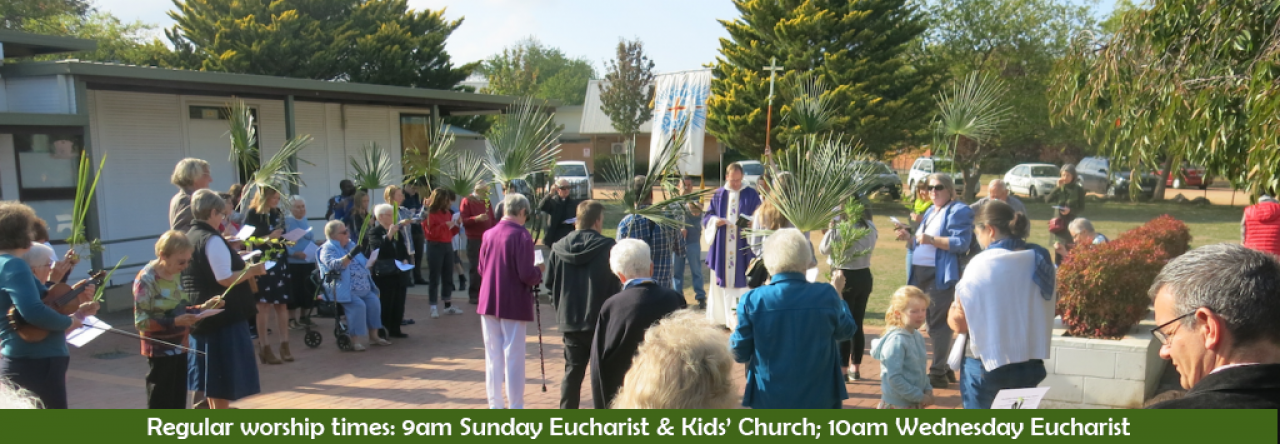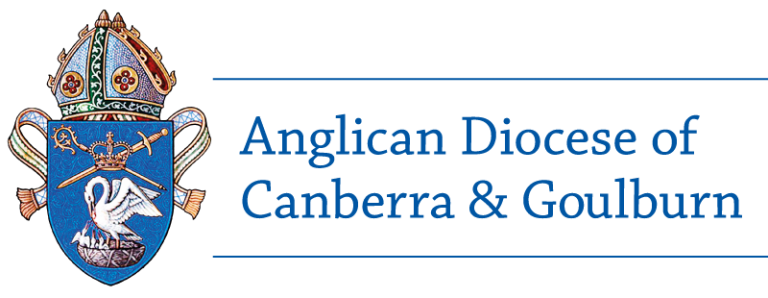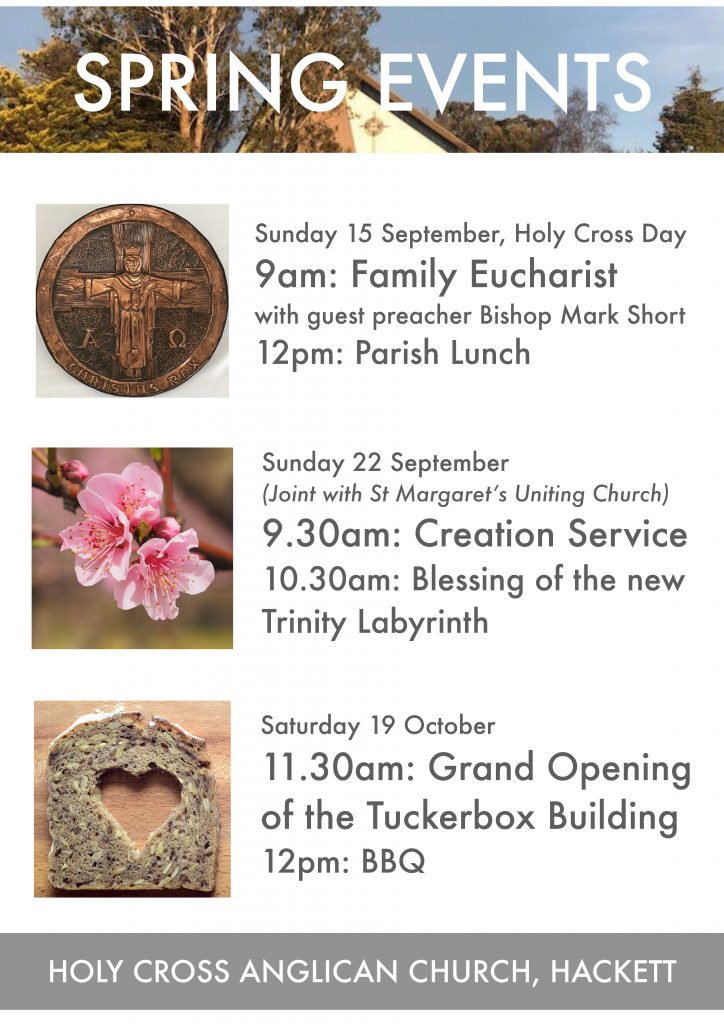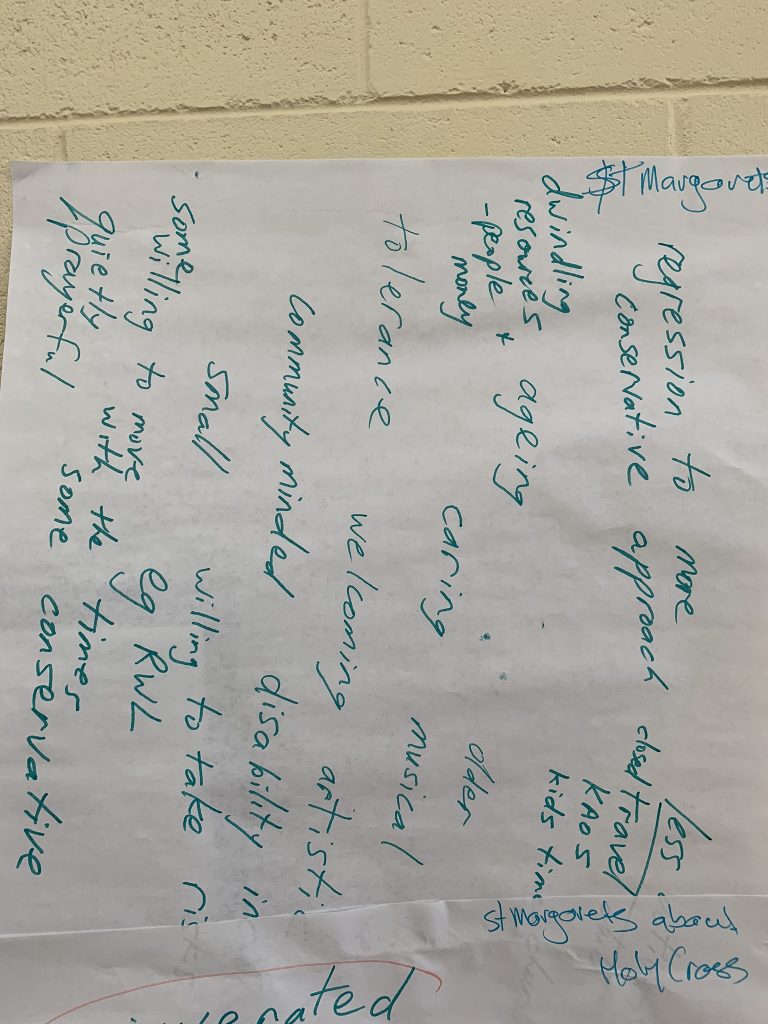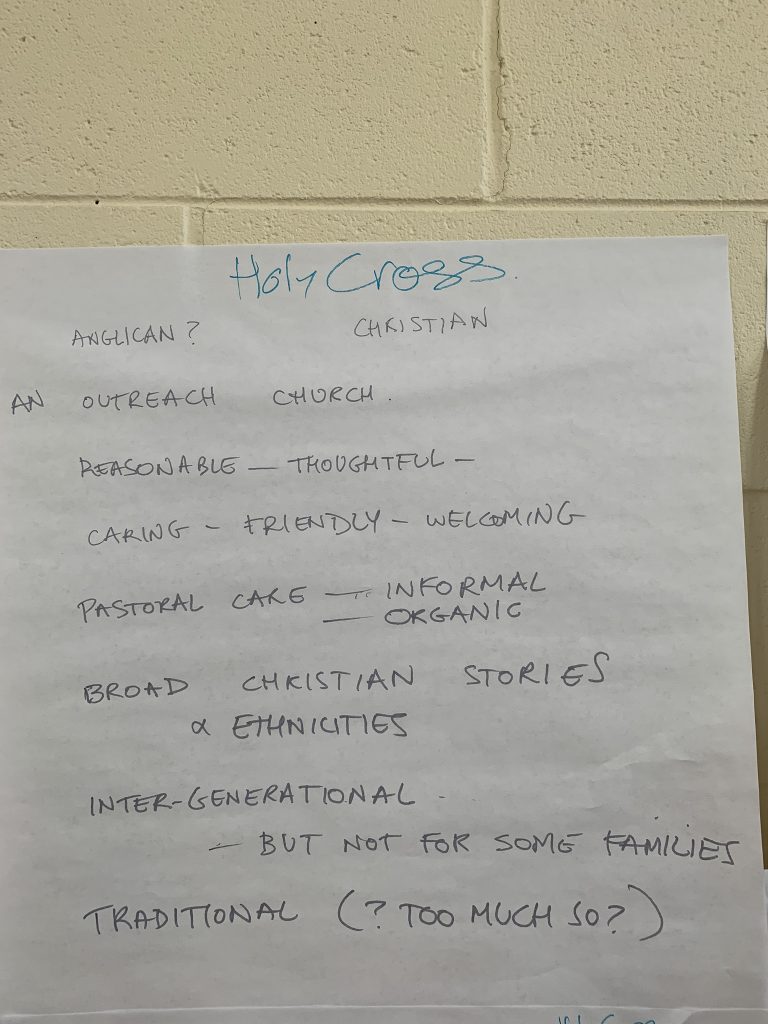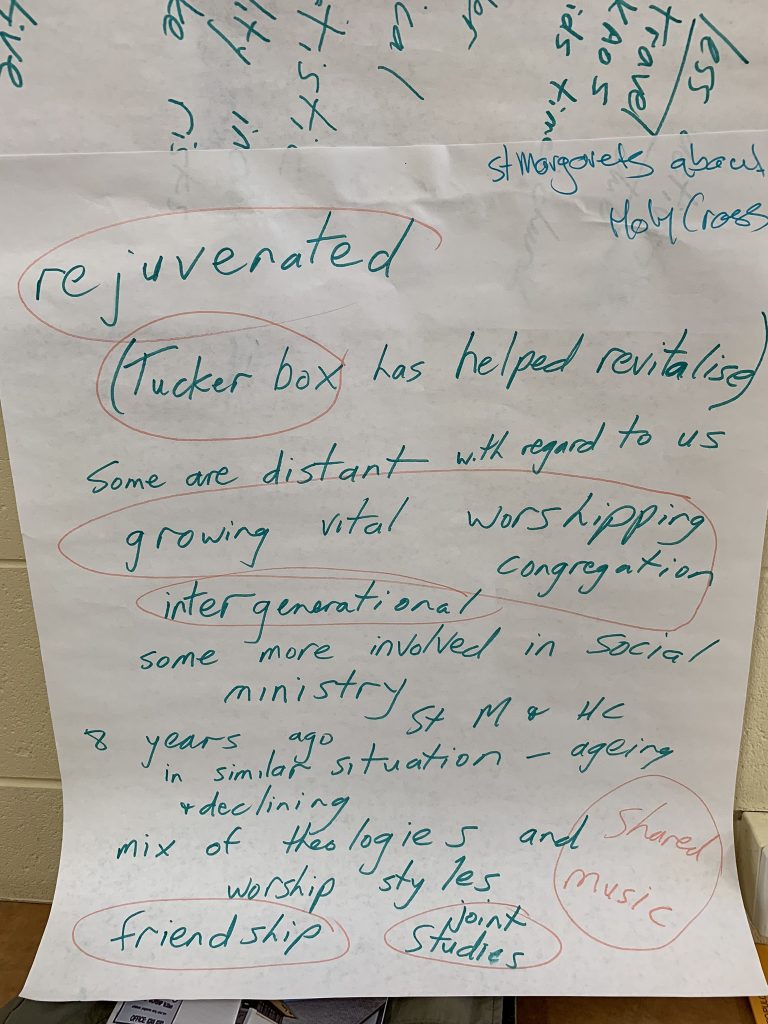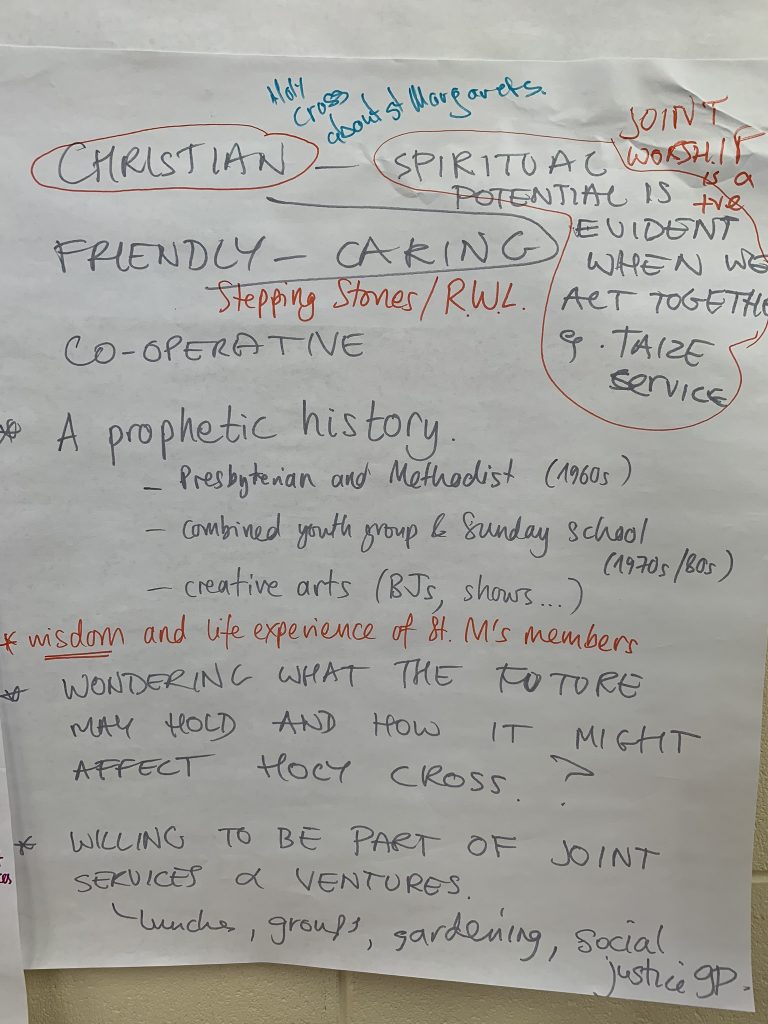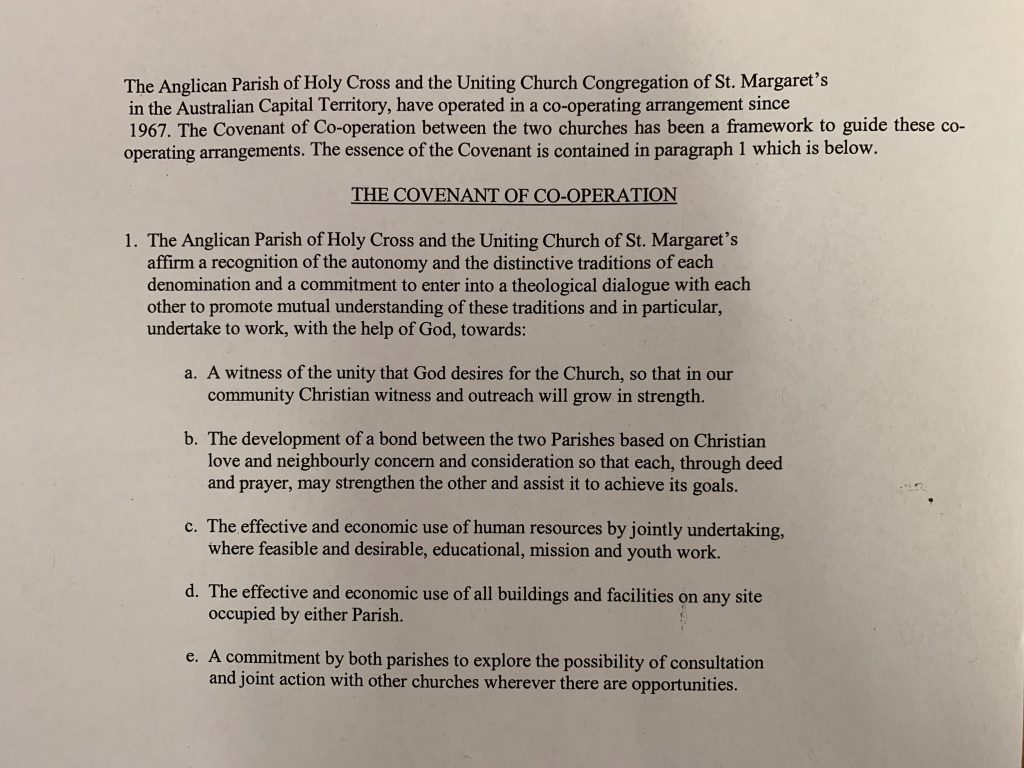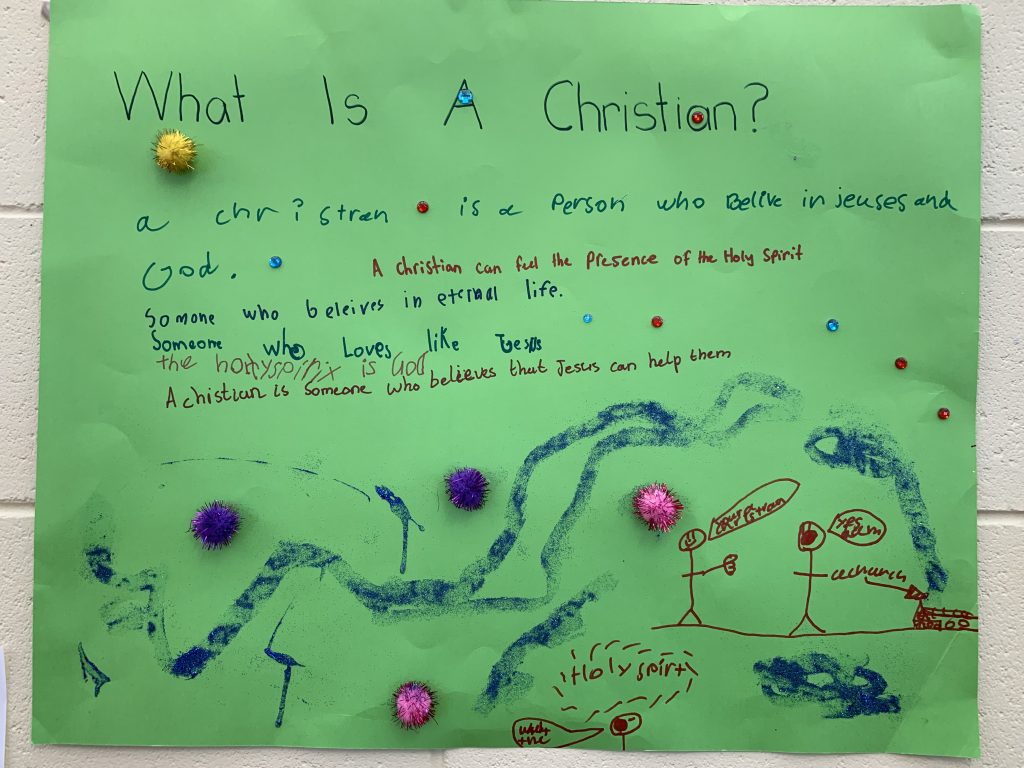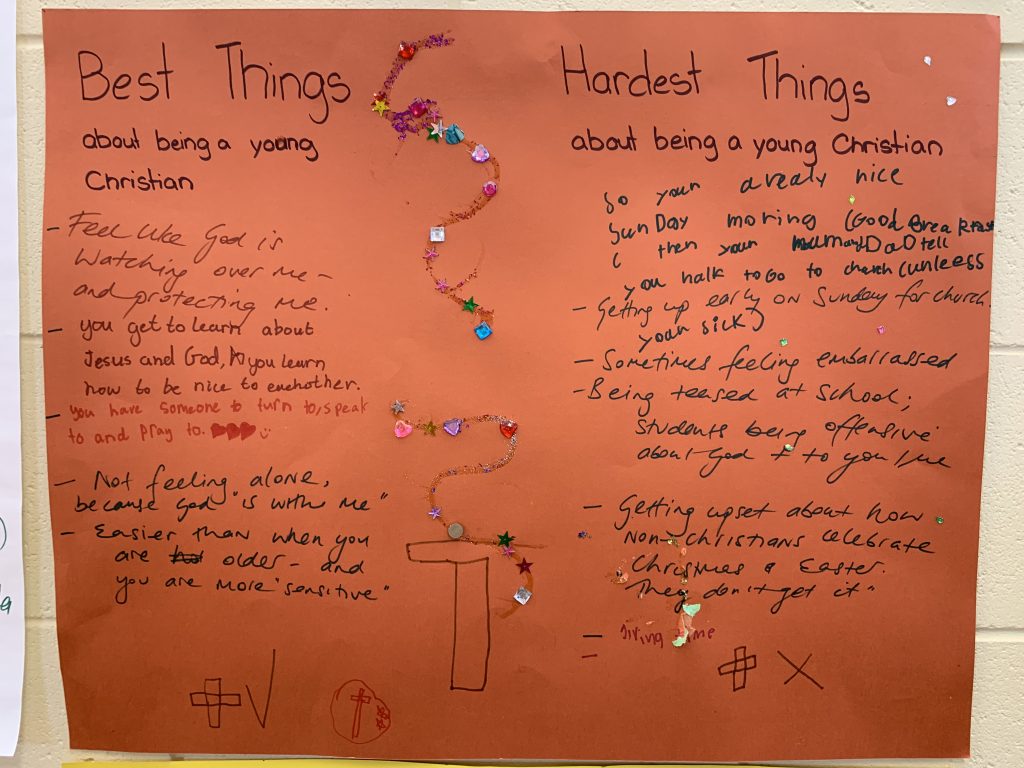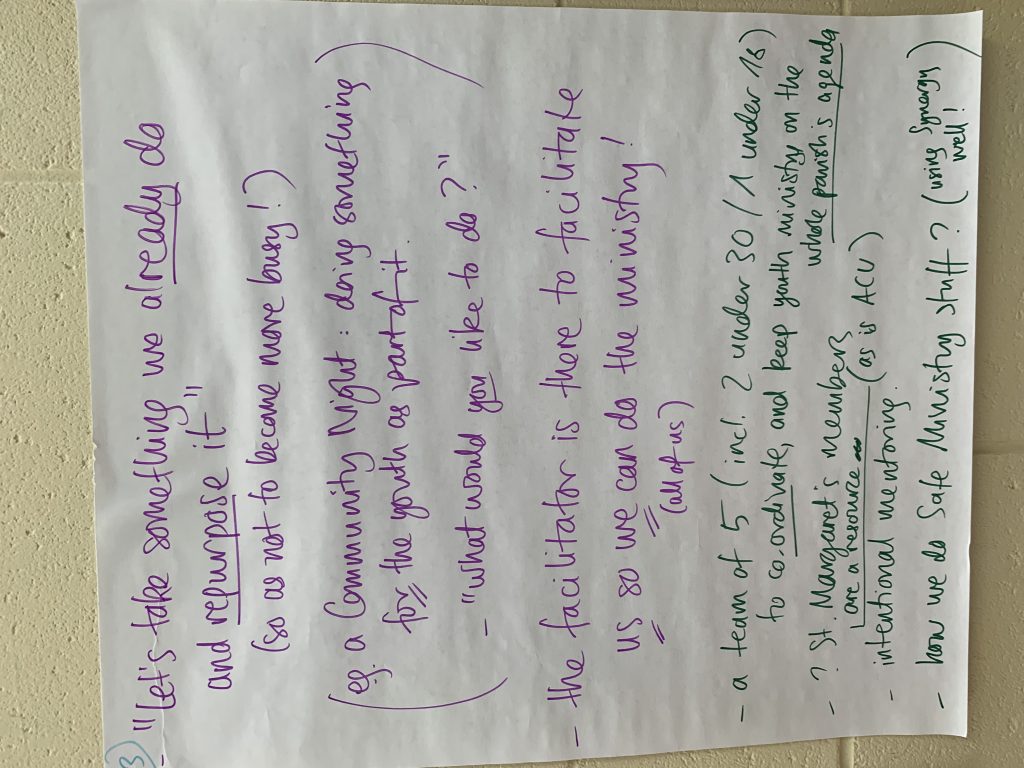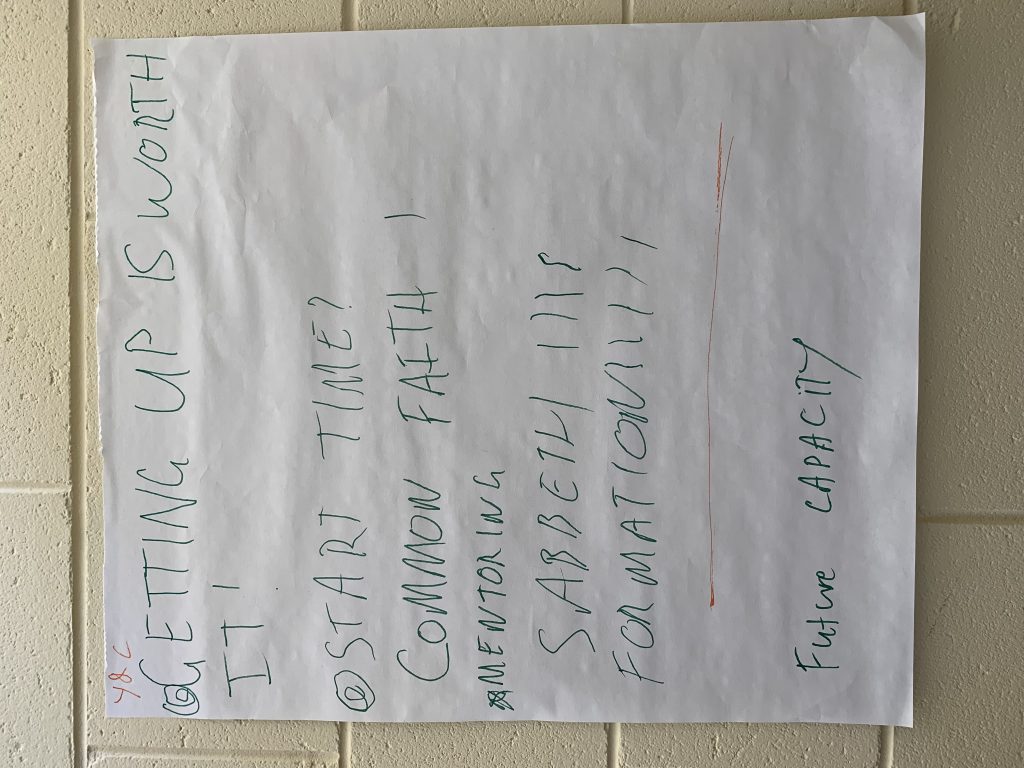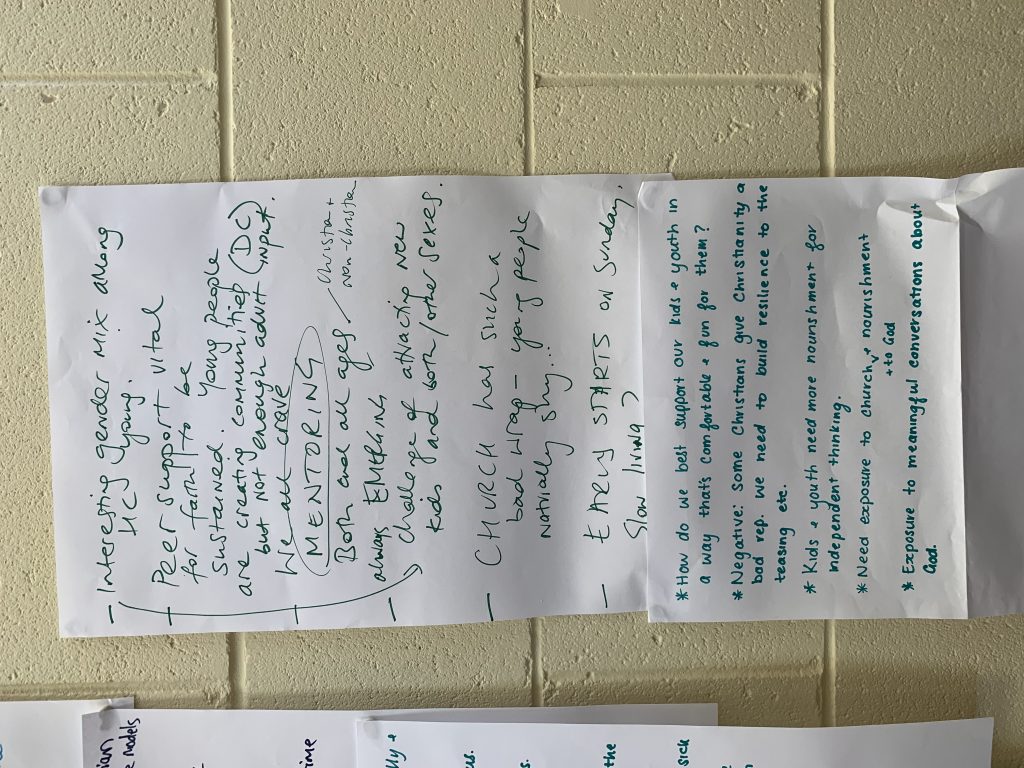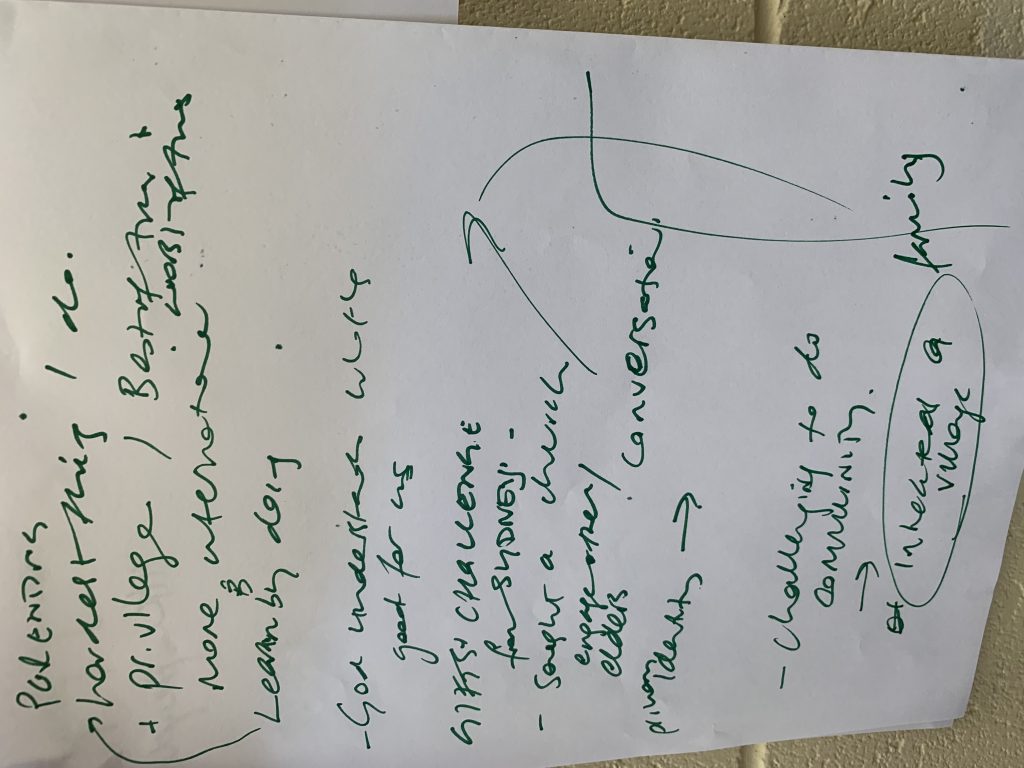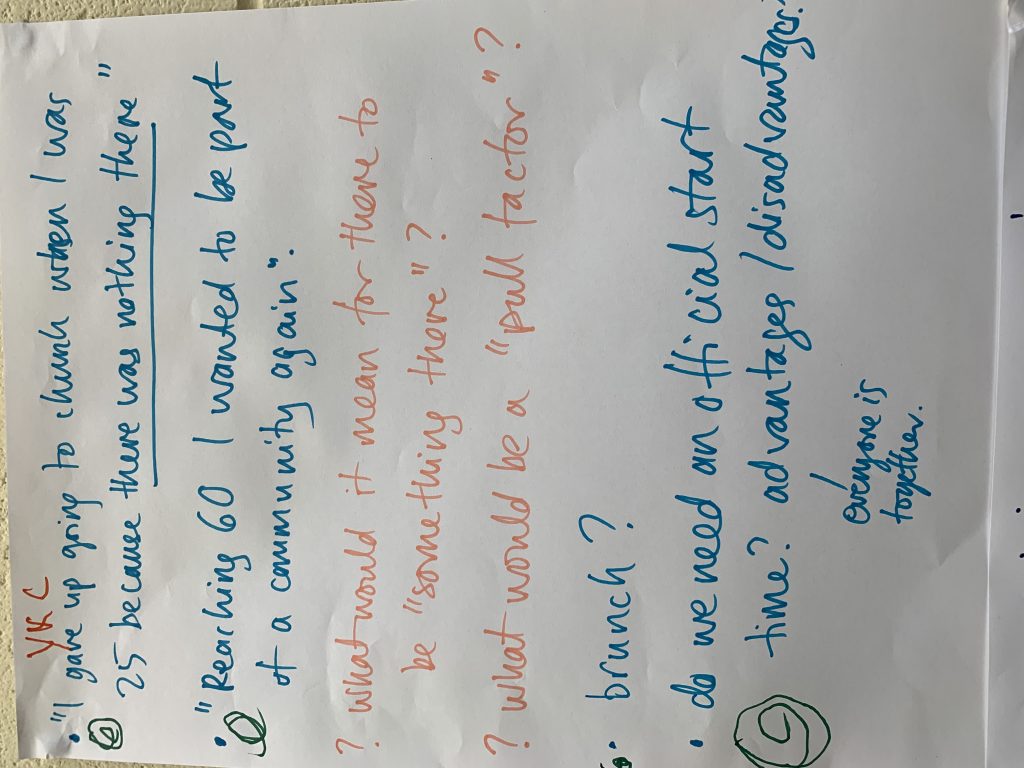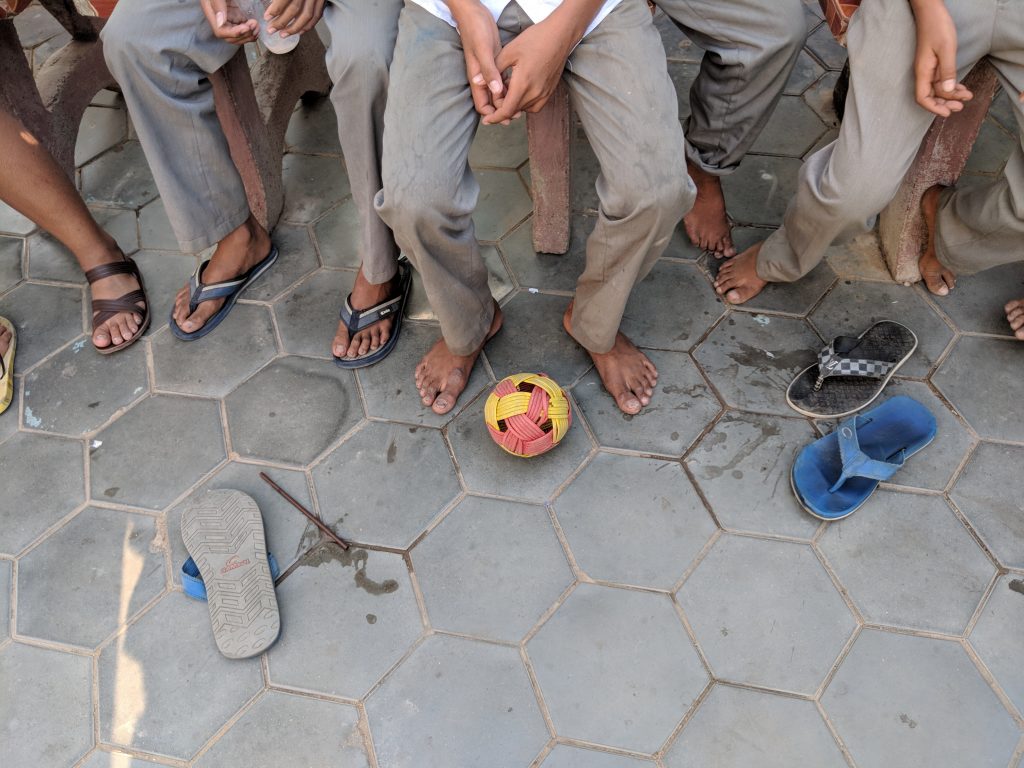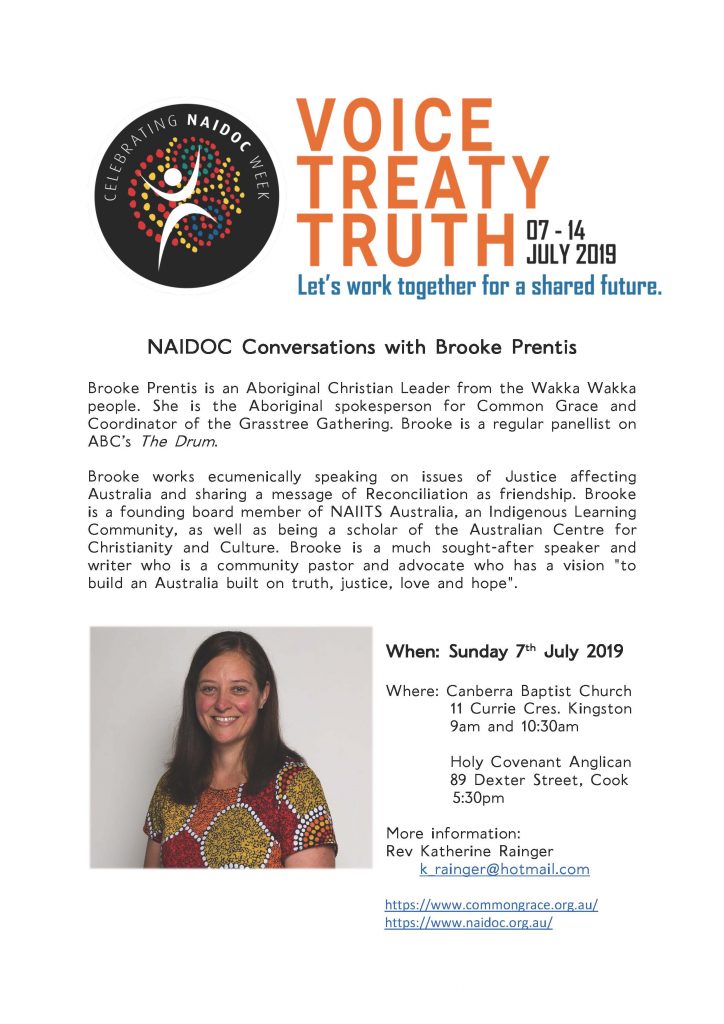
Labyrinths are an ancient spiritual practice: for many thousands of years, people of all faiths and none have used them for prayer and meditation. In the Middle Ages Christians embraced them as a form of pilgrimage: the most famous one is in Chartres Cathedral, France. A labyrinth is not a maze: you can’t get lost! There’s just one route to follow which always leads to the centre.
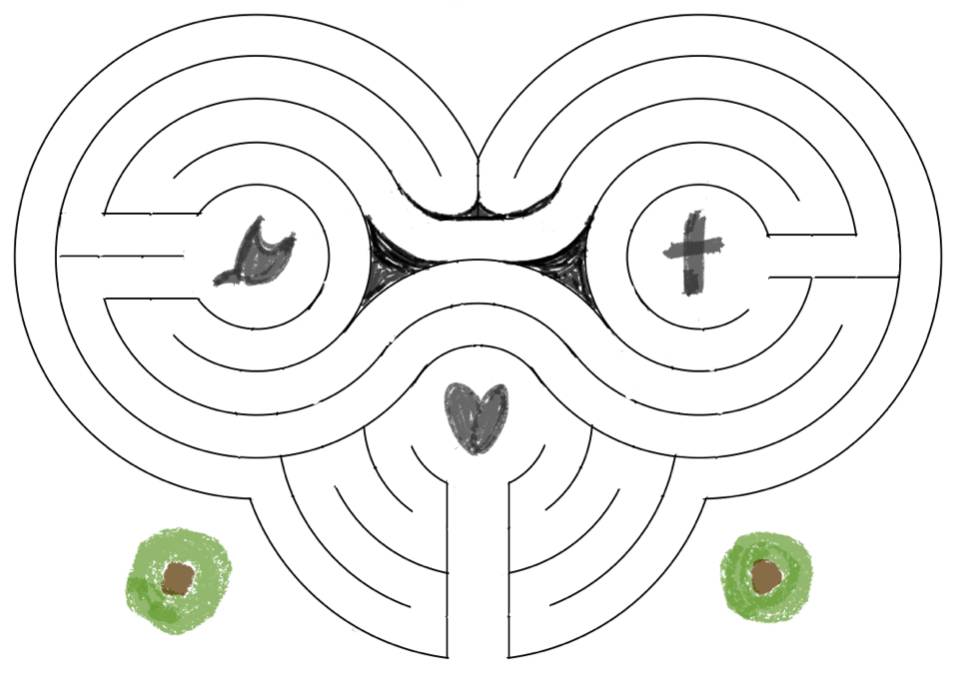
The Trinity Labyrinth is unusual in having three centres: the heart, representing the Father; the cross, representing the incarnate Son, Jesus Christ; and the dove, representing the life-giving Holy Spirit. The path that links the centres represents the “divine dance” of love between Father, Son and Spirit, in which we are invited to join. The theological word for this is perichoresis, from the Greek peri-khorein (which also gives us “chorus” & “choreography”).
Unlike some labyrinths which take you on a long journey before reaching the centre, when you enter the Trinity Labyrinth you are welcomed at once to the Father’s heart, and then invited on a pilgrimage into the heart of the love of God.
- Before you enter the labyrinth, you might want to reflect on a line of Scripture, hold a memory of a loved on you wish to pray for, or consider an experience from your life where you are seeking healing or forgiveness.
- As you walk the path, moving slowly at your own pace and pausing at the centres, you are invited to experience the love of God who is Father, Son and Holy Spirit, who creates, redeems and sustains you at every moment.
- When you return to the heart, you can either leave the labyrinth, or – if you have time – choose to continue on your pilgrimage (you might like to walk it three times). There is no right or wrong way to walk a labyrinth.
- When you leave, take a moment to thank God for what you have received.
Download the labyrinth card with this information here (pdf – 295kb).
